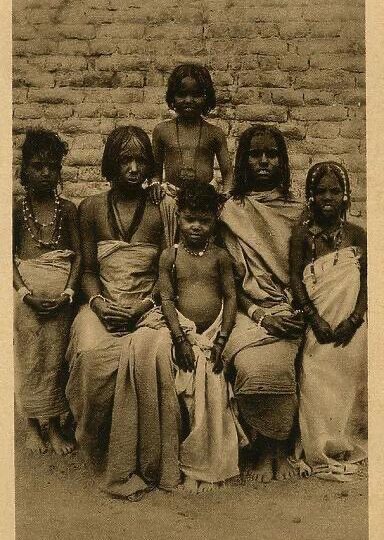The Nile Valley, often hailed as the cradle of human civilization, wasn’t just a hub for groundbreaking innovations in architecture, astronomy, and governance—it was also a vibrant mosaic of African phenotypical diversity. Imagine a place where the jet-black skin of South Sudanese people stood alongside the citrine yellow tones of the Khoisan, the reddish-brown hues of Upper Egyptians, and the high yellow complexions of Ethiopian Highlanders.
According to the Know Thyself Institute, ancient Kemet (Egypt) celebrated this diversity, with no trace of the colorism that plagues modern societies. Instead, the Nile Valley was a cultural crossroads, where Nubia, Egypt, the Sahel, and the Horn of Africa exchanged ideas, traditions, and even physical traits over millennia.
This article will take you on a journey through the historical evidence of this phenotypical diversity, its deep cultural significance in shaping ancient societies, and how understanding this history can challenge our modern perceptions of race and identity in Africa. Let’s dive into the rich tapestry of the Nile Valley’s past.
Historical Context of Nile Valley Diversity
The Nile Valley, stretching from modern-day Sudan to Egypt, has been a corridor of human interaction since at least 3200 BCE. This region, encompassing ancient Nubia and Kemet, was far from isolated—it was a bustling nexus of trade, migration, and cultural exchange. Archaeological evidence paints a vivid picture of this interconnectedness. For instance, petroglyphic engravings at Nag el-Hamdulab in Egypt, dating back to the pre-dynastic period, depict diverse populations united by shared symbols like solar iconography (Hendrick et al., 2012). These early interactions weren’t just about goods—they were about people, ideas, and phenotypes.
The A-Group culture in Nubia (3500–2800 BCE) played a pivotal role in shaping pre-dynastic Egypt. Excavations at sites like Qustul reveal pottery and iconography that mirror early Egyptian styles, suggesting a deep cultural exchange (Michinori, 2000). Nubians, often characterized by darker complexions, traded cattle, gold, and incense with Egyptians, whose reddish-brown hues are well-documented in their own art. Meanwhile, populations from the Horn of Africa, with lighter high yellow tones, contributed to the genetic and cultural mix, as evidenced by shared burial practices across the region. The Sahel, too, played a role, with its populations bringing unique traditions that influenced Nile Valley astronomy and ethics.
This diversity wasn’t a coincidence—it was the result of millennia of interaction. The Nile River acted as a lifeline, connecting disparate groups and fostering a shared identity. Ancient texts, like those from the Meroitic period in Nubia (200 BCE), though not fully deciphered, hint at a society that valued its varied peoples (Institute for the Study of Ancient Cultures, 2025). From the reddish-brown Bishari of Upper Egypt to the onyx-black South Sudanese, the Nile Valley was a melting pot where phenotypes reflected the region’s rich history of collaboration.
Cultural Significance of Phenotypical Diversity
In ancient Kemet, phenotypical diversity wasn’t just a fact of life—it was a cultural cornerstone. Unlike today’s world, where skin tone can divide, the Kemites saw diversity as a symbol of unity. This is evident in their art and mythology. Wall paintings in tombs, such as those in the Valley of the Kings, depict individuals with a range of skin tones—jet black, reddish-brown, and high yellow—working, worshipping, and celebrating together. The rhyton, a ceremonial vessel from the 18th Dynasty, features Africans of varying complexions, suggesting a reverence for this diversity (Kemet Expert, 2025).
Burial practices further underscore this unity. Mummification, often associated with Egypt, has roots in Saharan traditions that Nubians helped transmit to the north. The process was applied to people of all phenotypes, with no evidence of discrimination based on skin tone. In fact, the Kemites’ concept of Ma’at—harmony and balance—extended to their social structures, where diversity was seen as a reflection of cosmic order. This absence of colorism is remarkable, especially when compared to modern struggles with racial bias.
The cultural exchange that fueled this diversity also drove innovation. The Nile Valley’s advancements in astronomy, like the 365-day calendar, were built on knowledge shared across regions, from the Sahel’s star charts to the Horn of Africa’s ethical philosophies. Artistic expressions, such as the use of lapis lazuli in jewelry, reflect trade networks that brought together diverse peoples. The Kemites didn’t just tolerate diversity—they thrived on it, creating a civilization that drew strength from its multifaceted identity. This interconnectedness extended beyond the Nile, influencing the broader African continent and laying the foundation for a legacy of collaboration that we can still learn from today.
Modern Implications of Understanding Diversity
Understanding the phenotypical diversity of the Nile Valley has profound implications for how we view African history and identity today. For too long, Eurocentric narratives have whitewashed ancient Egypt, portraying it as a civilization detached from its African roots. Scholars from the Nile Valley Collective are working to change this, advocating for a recontextualization of Egypt within its broader African framework. They argue that museum exhibitions should reflect this diversity, showcasing the contributions of Nubia, the Sahel, and the Horn of Africa to Kemetic culture (Nile Valley Collective, 2025).
This history also challenges modern colorism, a pervasive issue in many African and diasporic communities. By looking to the Kemites, who celebrated all shades, we can find inspiration to dismantle these harmful biases. Imagine a world where, like in ancient Kemet, diversity is seen as a strength rather than a divider. This isn’t just a dream—it’s a call to action. Educational initiatives, like those on afriker.com with the tag phenotypical diversity, are helping to spread this message, encouraging us to embrace our shared heritage.
Moreover, recognizing this diversity can foster unity across modern African nations. The Nile Valley’s history of cooperation—whether in trade, art, or science—offers a blueprint for collaboration today. By learning from the past, we can build a future where African identity is celebrated in all its forms, from the Khoisan’s citrine yellow to the South Sudanese onyx black. This understanding also empowers the African diaspora, providing a historical anchor for those seeking to reconnect with their roots.
The phenotypical diversity of the Nile Valley is more than a historical footnote—it’s a testament to the region’s role as a cultural crossroads. From Nubia to ancient Kemet, these societies thrived on collaboration, not division, creating a legacy that still resonates today. By celebrating all phenotypes, from the reddish-brown Bishari to the high yellow Ethiopian Highlanders, the Kemites showed us what true unity looks like. Let’s honor this legacy by embracing diversity in our own time, challenging colorism, and fostering a deeper appreciation for African history. Want to learn more about this incredible heritage? Head over to afriker.com with the tag phenotypical diversity to explore further.
For a deeper dive into the academic perspective, check out this study on Nile Valley cultures with the tag Nile Valley by the Nile Valley Collective. Together, we can keep this history alive.

